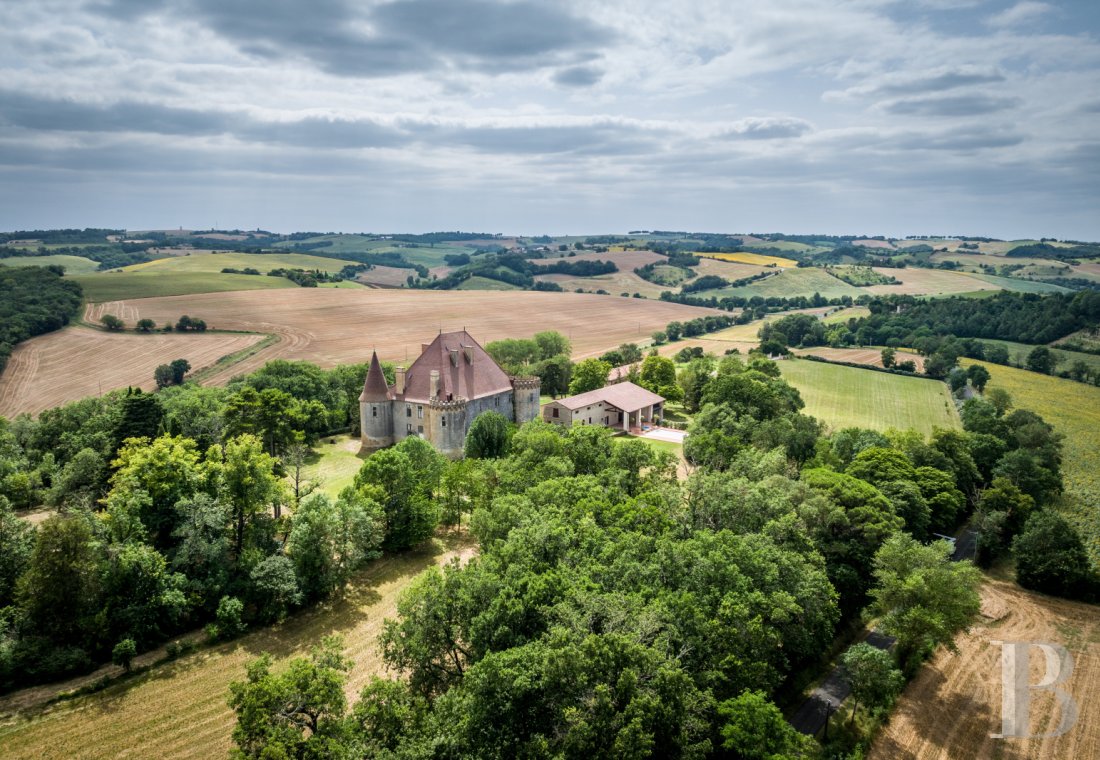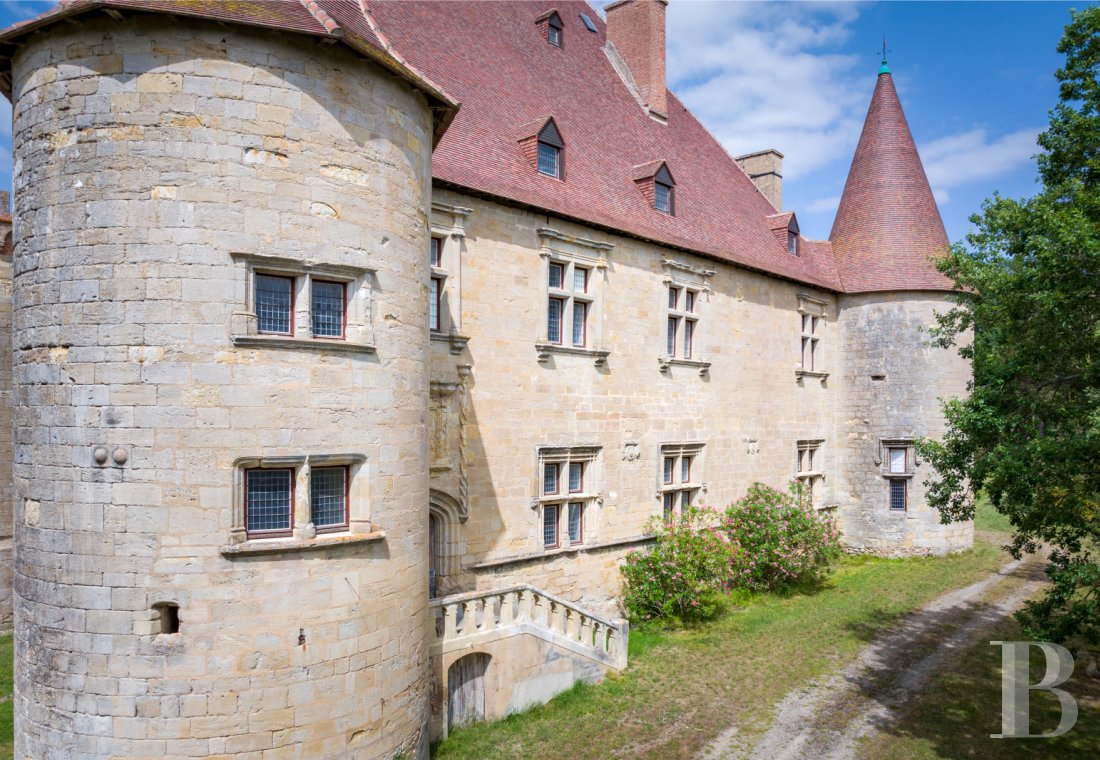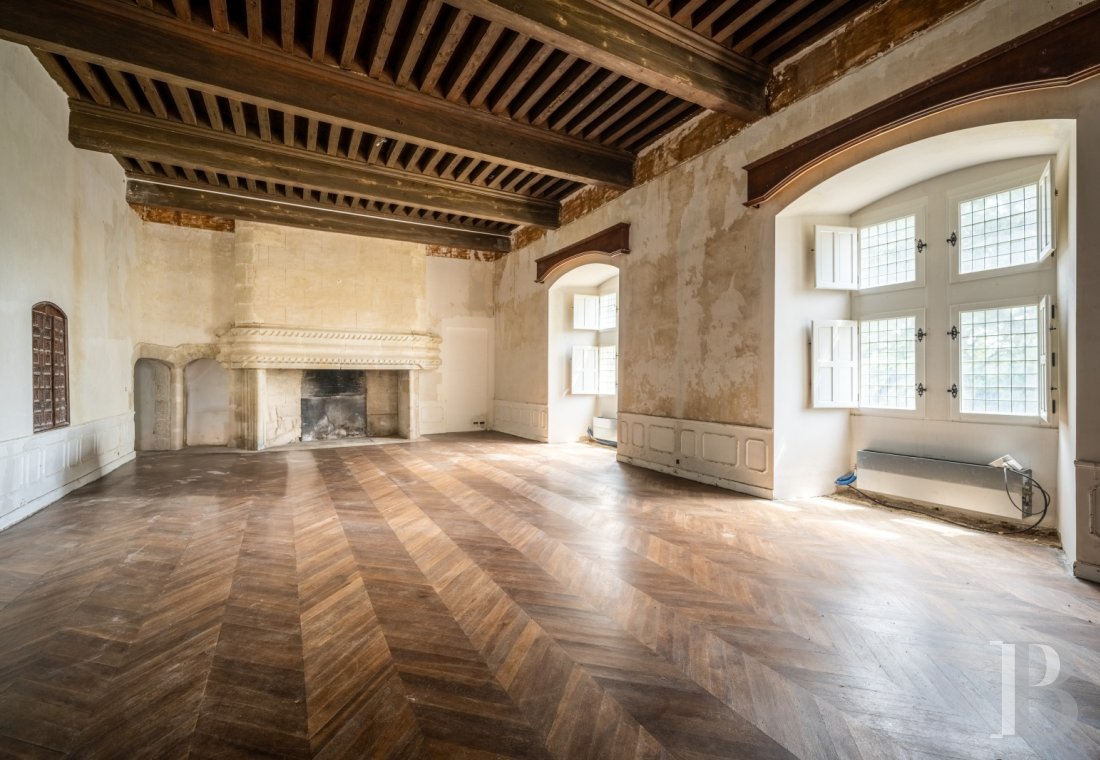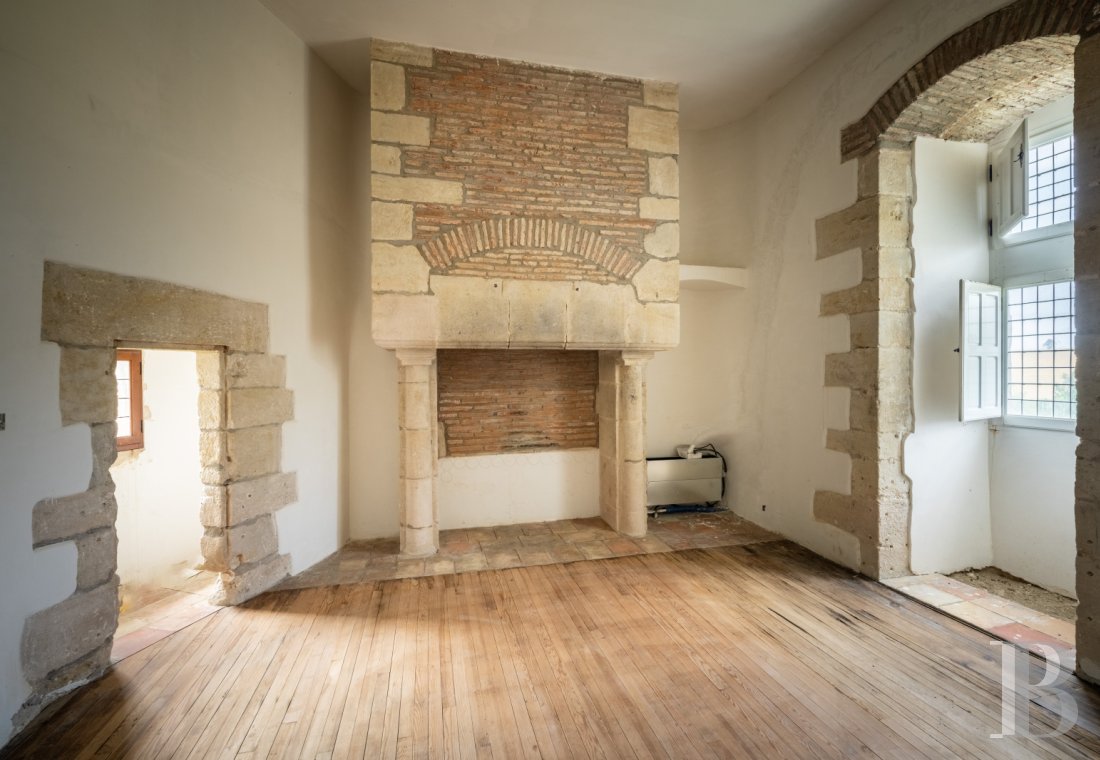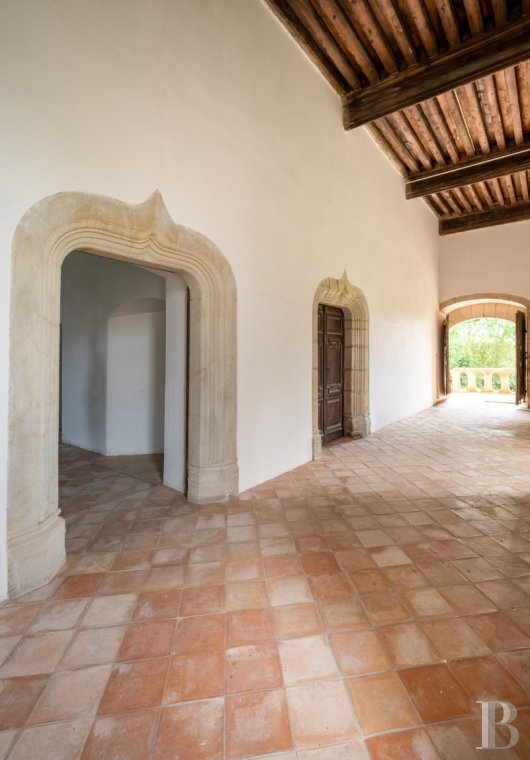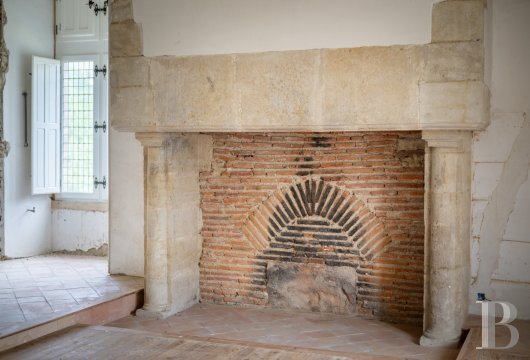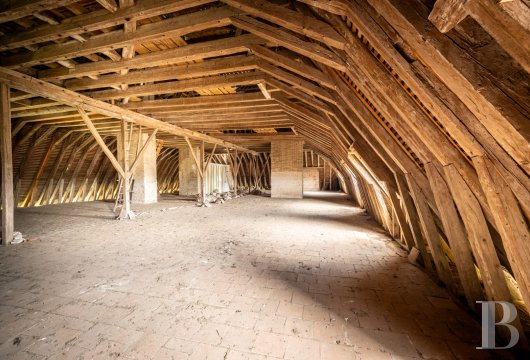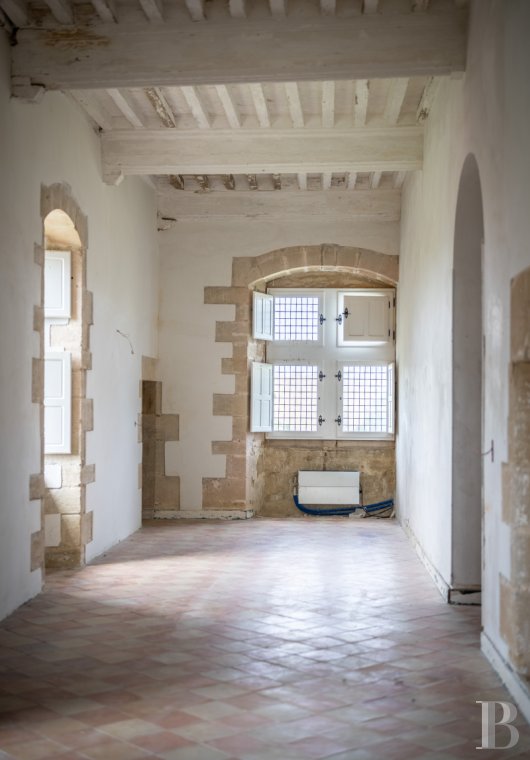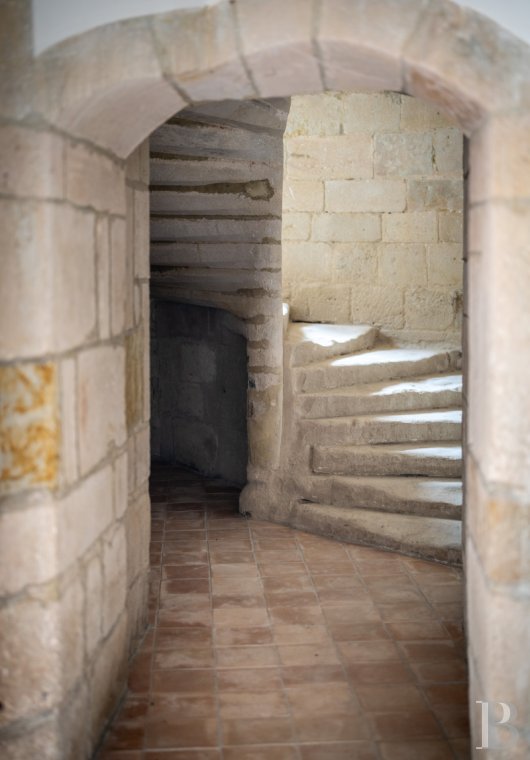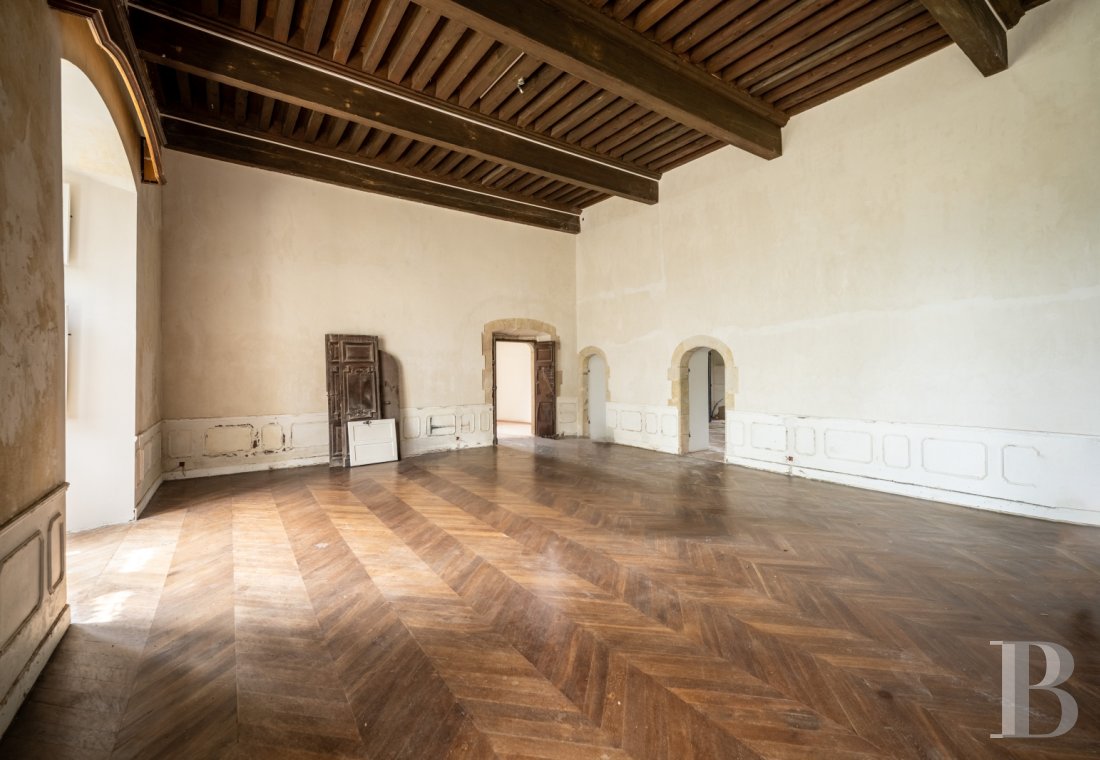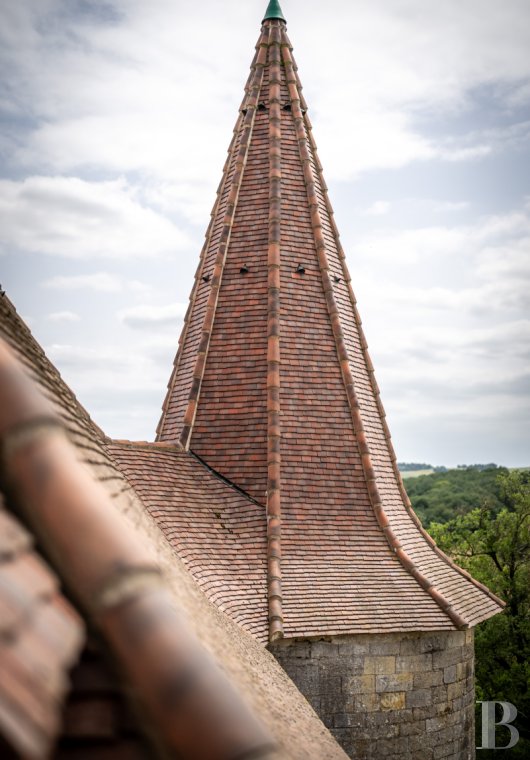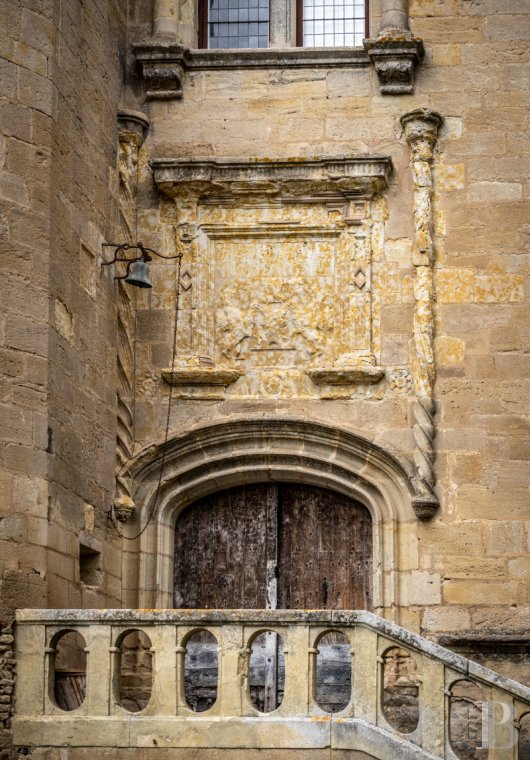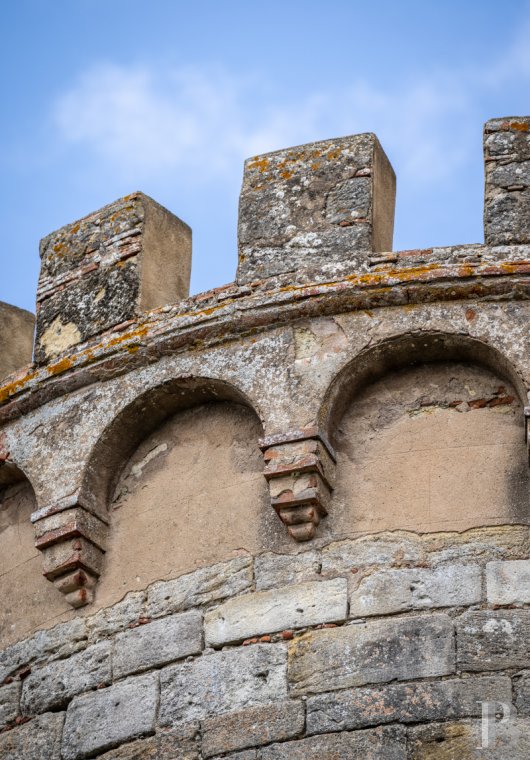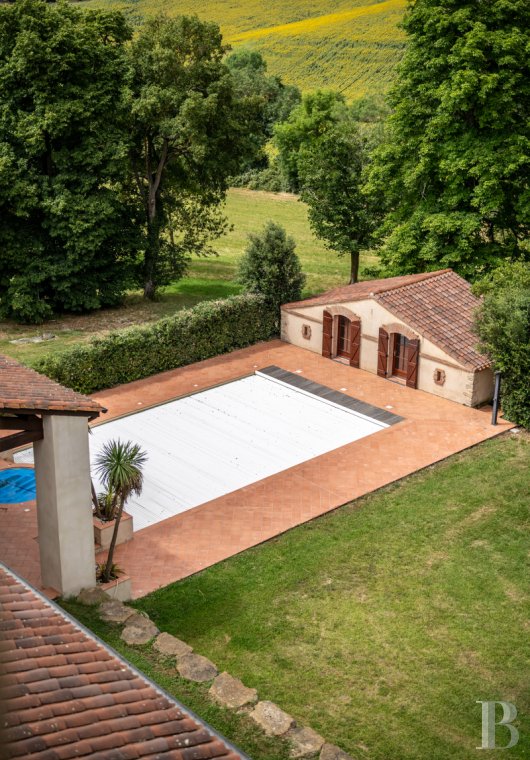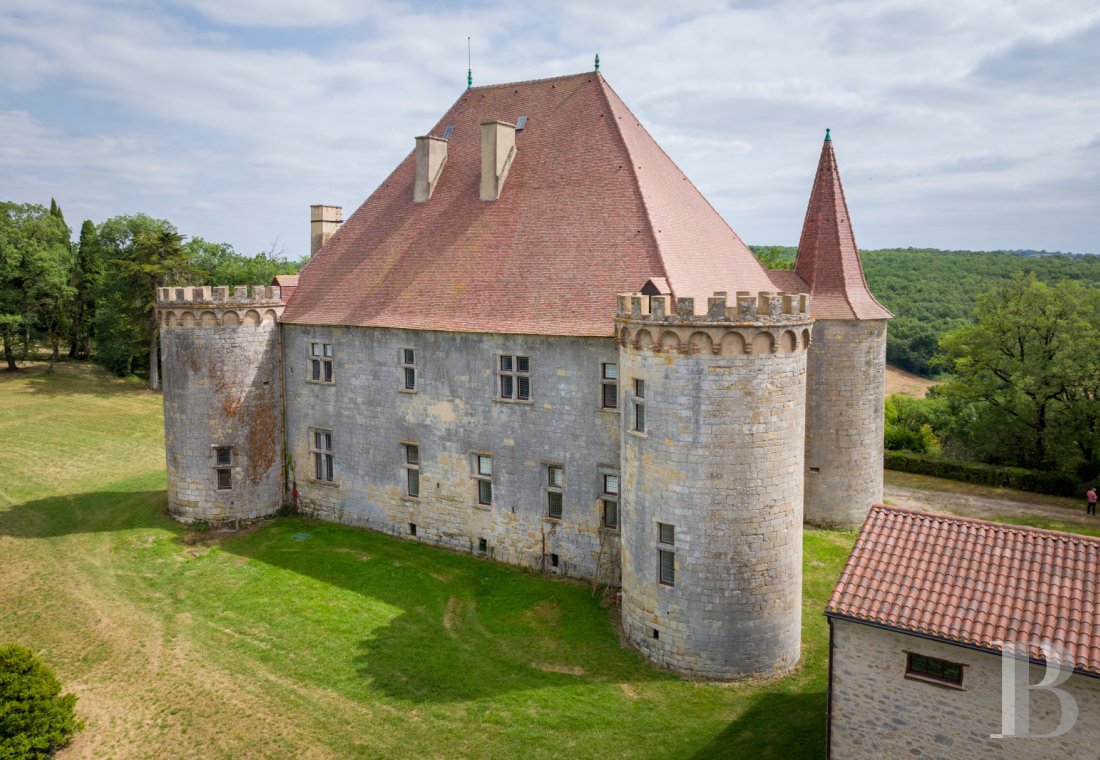surrounded by 12 hectares of woods and meadows

Location
The estate lies on the edge of a small plateau, close to a village, with the narrow valley of the Cardijol stream forming the dividing line. The village was first explicitly mentioned in 1292. Earlier documents simply made reference to the settlement: a charter from 979 in which the name "Marcheisco" appeared, and another text from 1191 which mentioned the name "Marquino", when Lord Pierre de Marquein - known as Subirat - and his wife Jeanne Albia donated it to the Riva hospital in Saint-Michel-de-Lanès.
All day-to-day shops can be found in the village of Villefranche-de-Lauragais, a 15-minute drive away. The property is 1 hour from Toulouse-Blagnac airport and 15 minutes from the A61 motorway, which connects to Andorra in 2 hours.
Description
Both stylistically and structurally, the castle, which should be described as a "feudal fortified mansion", appears to date from the reign of Charles VIII or Louis XII, although it was built in 1539. It consists of an elongated rectangular main building with two parallel sets of rooms, more than 27m long and 18m wide. Each corner of the main building features round towers with an external diameter of around 7.5 m, enough to cover the facades. They have arrowslits on each level, facing the entrance door and the southern curtain wall.
The roof of the central section is clad with flat tiles featuring square or rounded ends. Some of the tiles are fixed with nails. The roofs of the two front towers are clad exclusively with rounded tiles. The roof of the south-west tower has retained its sealed monk-and-nun tile ribs, while the south-east tower, whose timberwork and roof were restored in the early 20th century, now features a conical pepperpot roof.
The walls, with their regularly dressed calcareous sandstone, have an average thickness of almost 1.5 metres.
The castle was listed as a historic monument in 1972, with heritage protection afforded to its facades and its high hip roof, crowning an impressive loft.
The castle
The ornamental style of the four windows on the upper floor is typical of the Renaissance. They feature a classical Ionic order. The engaged columns rest on projecting brackets that also support the windowsills, while the lintels are topped by a rectilinear entablature without a pediment. The extremely sober articulation - only the capitals and brackets are carved - is surprising given the construction date of 1539.
Although the house may appear to reflect the medieval tradition, its layout is already influenced by the latest architectural developments in terms of interior arrangement. The block plan, with two parallel sets of rooms, was still quite unusual. The small round corner towers with square rooms and annexes were also in keeping with the new architectural trends seen in wealthy residences. However, the decorative style of the window frames, doors and crosspieces on the facades and towers is in the traditional late Gothic style of the end of the 15th century.
The spiral staircase in the tower is also medieval, as are the monumental fireplaces with moulded mantels and projecting cornices.
The ground floor
The layout of the original dwelling is fairly simple. Once you have passed through the gate and the solid wood double door, you find yourself on the ground floor in a passageway that crosses the dwelling from south to north. There are six large rooms on this level. To the left is the start of the spiral staircase leading to the first floor and the attic of the dwelling. At the end of the corridor, with its terracotta tiled floor and beamed ceiling, a cross-window illuminates the northern part of the hallway, which is also lit from the west by two semi cross-windows. In the left-hand corner of the cross-window, a door opens onto a room in the north-west tower. On the right-hand side, the interior wall has two similar windows with lintels ending in accolades.
The first door leads to the south-facing flat, which enjoys a magnificent vista over the valley and neighbouring hills. The dwelling comprises a vast double reception room featuring a monumental fireplace with a moulded cornice carved in the late Gothic manner. There are no carved elements on the mantelpiece. The five-bay ceiling with exposed beams and joists is original, and the flooring is herringbone parquet. Passageways run along the windowless wall, which has a fairly elaborate feature at the corner of the fireplace, providing access to the bedroom next to the sitting room or to an adjoining room via an oblique passage cut into the interior wall. There are two large bedrooms on either side of the corridor, each associated with a room in the tower that could be used as a walk-in wardrobe.
The upstairs
Today, three staircases provide access to the first floor, two of wood and one of stone. The corridor leading to the various rooms has a terracotta-tiled floor, a beamed ceiling painted white like the walls, and exposed dressed stone window surrounds. There are currently nine bedrooms, all with beamed ceilings and narrow strip hardwood floors. Two of these have been converted from the former state room. The layout of the others has remained unchanged since the 15th century. The bedrooms are spacious; two of them have bathrooms in the towers. All these bedrooms are illuminated by mullioned windows with white-painted shutters: on the north facade, the surrounds feature simple mouldings, while on the south facade they consist of pilasters resting on brackets and half-columns supporting an entablature. There is a massive stone and brick fireplace in one of the bedrooms.
The attic
The attic space covers the entire floor area of the castle and contains a true work of art: a traditional medieval trussed rafter with cross frames, which has become very rare today. It appears to date from the first period of construction of the fortified house, which is thought to have started in the 15th century. The floor is laid with rectangular terracotta tiles.
The outbuildings
These comprise two separate buildings on either side of the driveway, situated in front of the castle.
To the left of the path leading to the castle, a large three-storey gîte (guest house) with coursed rubble masonry facades, rectangular or arched windows and a monk-and-nun tile gable roof has been created. It has a large living room and three bedrooms with a shower room on the first floor. The interior is simply decorated, with the family room featuring large floor tiles, a fireplace and exposed beams. The gîte is extended by an awning on the pool side at the rear. Next to this dwelling, a hangar with large arched openings surrounded by brickwork and a monk-and-nun tiled roof stretches towards the castle.
To the right, the second outbuilding with coursed rubble masonry walls, a monk-and-nun tiled roof and round-arched windows with brick surrounds, comprises a large garage, a workshop and a caretaker's flat.
The grounds
The castle is surrounded by 12 hectares of meadows and woodlands. The oak, maple and beech trees, scattered in groves or forming hedges, make up an extremely dense vegetation, accompanied here and there by isolated ornamental shrubs, some of which are flowering.
The heated swimming pool (approx. 12 x 6 m) is situated at the back of the gîte, bordered by tiled decks, a small single-storey house and a hedge.
Our opinion
Every stone, every nook and cranny of this listed castle and its outbuildings tells a story, taking the inhabitants and visitors into a world where elegance and history converge. However, although the shell of the castle has recently been restored, in particular the roof, it remains for those who wish to live there and add a new touch to its charm to devise their own personal vision of the medieval finishes to be restored, so that the place can fully rediscover its soul and take on a new look.
Reference 249280
| Land registry surface area | 12 ha |
| Main building surface area | 900 m2 |
| Number of bedrooms | 9 |
| Outbuilding surface area | 400 m2 |
NB: The above information is not only the result of our visit to the property; it is also based on information provided by the current owner. It is by no means comprehensive or strictly accurate especially where surface areas and construction dates are concerned. We cannot, therefore, be held liable for any misrepresentation.

